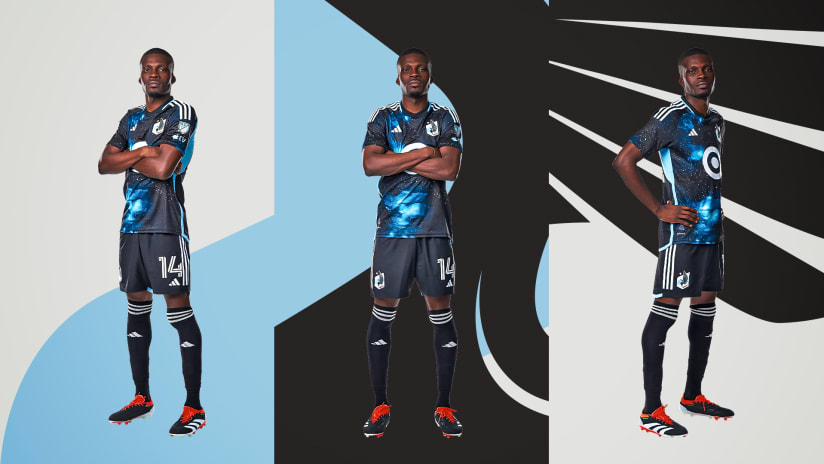The New England Revolution have lost two games in the last three-and-a-half months. One of those games was to the Columbus Crew, who the Revs just ruthlessly dispatched to the tune of 7-3 in the Eastern Conference semifinals.
Here's the other: 2-1 to the Red Bulls, who played most of the second half with 10 men, at Red Bull Arena.
It was something close to a season-saving result for RBNY, a team that had won just twice in the previous three months. For New England, it was the last gasp of an awful summer. And since then, these two teams - thanks to some adjustments and one fortuitous blind draw - have arguably been the best in the league.
They'll get their rematch on Sunday in the Eastern Conference Championship (1:30 pm ET; NBC):
To the Left, to the Left
Mike Petke's been pretty candid about how he's been approaching each game, and how he conceptualizes his team tactically. The Red Bulls don't bother with high pressure, but they don't bunker, either. They like to have more of the ball, but they're not a pure possession team.
What they really like is to get it wide, and Budweiser Golden Boot-winner Bradley Wright-Phillips pretty much has just one job: Put the ball in the net.
It's been a good strategy, especially as the pieces came together in September for a compelling -- both aesthetically and in terms of storylines -- late-season run. Petke benched one DP (Tim Cahill), moved another out wide (Thierry Henry), and put two guys who were consistently scapegoated by the fanbase (Eric Alexander and Peguy Luyindula) into spots where they've become not just necessary, but essential.
Now that that's out of the way, let's talk about Titi.
This is possibly his last game at Red Bull Arena, and he's been blindingly good over the last couple of months. By the numbers: 5 goals and 8 assists in his last 13 games, during which the Red Bulls are 8-4-1.
Henry's preferred theater of operations since coming to Harrison was always the left-central channel, but how he'd get there was always a bit of a question. For the most part he'd start as a pure striker, or slightly removed into more of a playmaker's role, and then drift out wide from the middle.
Come September, Petke simplified things. Henry is now a left winger -- albeit one with the capability of holding the ball up like a No. 9, and possessed of a No. 10's vision -- in a 4-2-3-1, using his gravity to pull defenders toward him and thus open up channels for guys like Luyindula and BWP.
Here is Henry the playmaker:
Here is Henry the forward:
Here is Henry the winger:
His ability to fill all three of those roles has allowed BWP to specialize as a poacher who stays high and central, which in turn forces the central defenders to stay narrow and connected. That, in turn, makes it difficult for those guys to step out and help the fullback should Henry or Lloyd Sam get into isolation. And all of that pulls the central midfielders away from Alexander and Dax McCarty, who've repeatedly found more time and space to control how and where the game is played.
New England need to solve this riddle, and do it fast.
Tactical Outlook: 4-2-3-1 with all roads leading to Henry.
X-factor: Can Ambroise Oyongo, who will likely replace the suspended Roy Miller, curb his attacking instincts just a bit? The Red Bulls thrive with selective overlaps, not constant overlaps, and the last thing Petke will want is the young Cameroonian dragging defenders into Henry's channel for 90 minutes.
The American Press
On first glance the Revs look like a gegenpressing team, pushing numbers aggressively into the attacking third and daring you to build through the maelstrom. It unnerved, unmanned, and utterly destroyed the Crew, who'd made their late-season surge based on a level of comfort with the ball that most teams in MLS can't achieve.
But New England's pressure is a little different than that of, say, Borussia Dortmund. The German club executes its press by targeting specific individuals and limiting their space; the Revs, on the other hand, target specific areas and flood them with numbers. If the opposition then breaks through, they retreat to the final third and defend in their own box.
It's not that they don't defend the midfield; it's that they are willing to play to a stalemate in those battles so that they don't get overextended at the back.
Speaking of the midfield: It's very good now that Jermaine Jones is on board. He's brought a physicality that New England had previously lacked, and he has fit right in.
But as skilled as the Revs central midfield trio of Jones, Lee Nguyen and the underrated Scott Caldwell are, they're still not a possession team:













